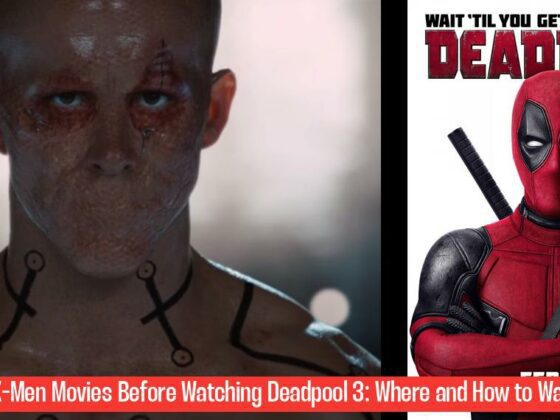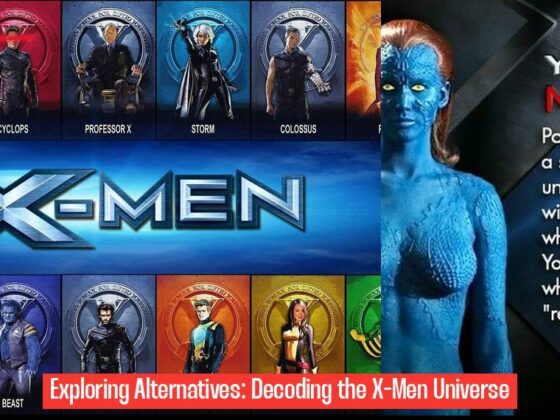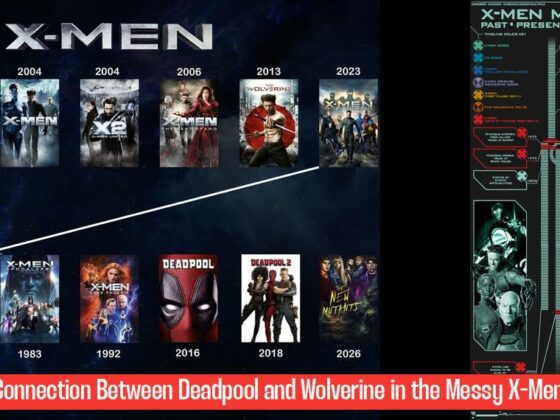The Intentional Gay Perspective in ‘X-Men’ and ‘X2’: A Deeper Look
Ah, the magical world of mutants and metal! It seems like the ‘X-Men’ and ‘X2’ movies have some hidden superpowers beyond just dazzling special effects. Dive deep into the intentional gay perspective woven into these films with us.
More updates: Final Fantasy XVI’s Expansion to Xbox Hinted in Director’s Message, Targeting a Broader Audience Post PC Release
Now, picture this: mutants Wolverine and Rogue caught up in a clash between Professor X’s X-Men and Magneto’s Brotherhood of Mutants. The stakes are high, and so are the underlying themes of acceptance and diversity. David Hayter, one of the brilliant minds behind writing these superhero sagas, spills the beans that the inclusion of a gay perspective in ‘X-Men’ and ‘X2’ was no accident – it was all part of the plan!
ASOG Fact: Ian McKellen, who portrayed Magneto, saw the stories’ allegorical connection to gay rights early on, tapping into an extra layer of depth that resonated with many viewers.
So, as you gear up for this enlightening journey through mutant mayhem with a touch of LGBTQ+ flair, let’s uncover how these films championed inclusivity and representation in a genre where heroes come in all shapes, sizes, and orientations. Ready to explore further? Keep reading for some mind-blowing insights ahead!
How ‘X-Men’ and ‘X2’ Encapsulate Gay Rights
In ‘X-Men’ and ‘X2’, the inclusion of a gay perspective was a deliberate and meaningful choice by the creators. Writer David Hayter expressed joy in representing Ian McKellen’s iconic Magneto, who symbolized and championed gay rights. The films revolve around mutants like Wolverine and Rogue caught between Charles Xavier’s X-Men promoting acceptance and Magneto’s Brotherhood of Mutants fighting for mutant-kind with a different approach. McKellen, as Magneto, grasped the allegorical connection to gay rights early in the storytelling process, adding depth and resonance to his character portrayal.
The intentional weaving of LGBTQ+ themes into these superhero movies sheds light on important social issues such as discrimination and acceptance. Recognizing these underlying messages not only enriches the viewing experience but also showcases how mainstream media can address crucial topics through fantastical narratives. It’s fascinating to see how characters like Magneto become symbols of marginalized communities, sparking conversations about representation and diversity in popular culture.
What makes these films even more intriguing is the subtle yet impactful way they delve into serious social issues while entertaining audiences with action-packed superhero adventures. Have you ever noticed similar layers in other superhero movies? How do you think such thematic depth enriches storytelling in these genres? Let’s continue unraveling the hidden gems within ‘X-Men’ and ‘X2’, where mutant powers merge with messages of inclusivity and equality!
Ian McKellen’s Influence on the Gay Allegory in ‘X-Men’ and ‘X2’
Ian McKellen’s portrayal of Magneto in ‘X-Men’ and ‘X2′ had a significant impact on the depiction of LGBTQ+ themes in these films. The screenwriter, David Hayter, revealed that McKellen recognized the allegorical connection to gay rights early on. This recognition added depth to McKellen’s iconic character and underscored the films’ underlying messages of acceptance and diversity. Alan Cumming, who starred in ‘X2: X-Men United,’ even went as far as calling it the “gayest movie” he has ever made. Hayter expressed his delight in representing McKellen, emphasizing that the inclusion of a gay perspective was intentional and purposeful.
In these superhero sagas, Magneto symbolizes marginalized groups fighting for their rights, paralleling real-world struggles for acceptance and equality. The films cleverly use mutants as metaphors for diverse communities, highlighting the dangers of intolerance through characters like Stryker while championing inclusivity through the X-Men. McKellen’s awareness of the gay allegory infused a unique layer of social commentary into the storytelling, resonating with audiences beyond traditional superhero narratives.
The deliberate incorporation of LGBTQ+ perspectives in ‘X-Men’ and ‘X2′ showcases how mainstream media can address important social issues while entertaining audiences with action-packed adventures. Have you ever noticed similar allegorical layers in other movies? How do you think such thematic depth enhances storytelling across different genres? Let’s delve deeper into Ian McKellen’s influence on these films’ subtle yet impactful exploration of discrimination, acceptance, and representation within the superhero universe!
What is the significance of the ‘Gay Perspective’ in ‘X-Men’ and ‘X2’ according to the writer?
The writer expressed that the portrayal of certain characters in ‘X-Men’ and ‘X2’ was intentionally done to resonate with the gay community, highlighting the importance of representation and inclusivity.
How did Ian McKellen perceive the allegory in ‘X-Men’ and ‘X2’ from a gay perspective?
McKellen, who starred in the films, recognized the allegorical representation of the characters and their struggles as being relatable to the gay community early on.
What is the plot of ‘X2: X-Men United’?
In ‘X2: X-Men United,’ when anti-mutant Colonel William Stryker kidnaps Professor X and attacks his school, the X-Men must join forces with their nemesis Magneto to thwart his plans.
Is ‘X2: X-Men United’ the first movie in the X-Men series?
No, ‘X2: X-Men United’ is the sequel to ‘X-Men’ (2000) and the second installment in the X-Men film series, featuring a star-studded ensemble cast.



